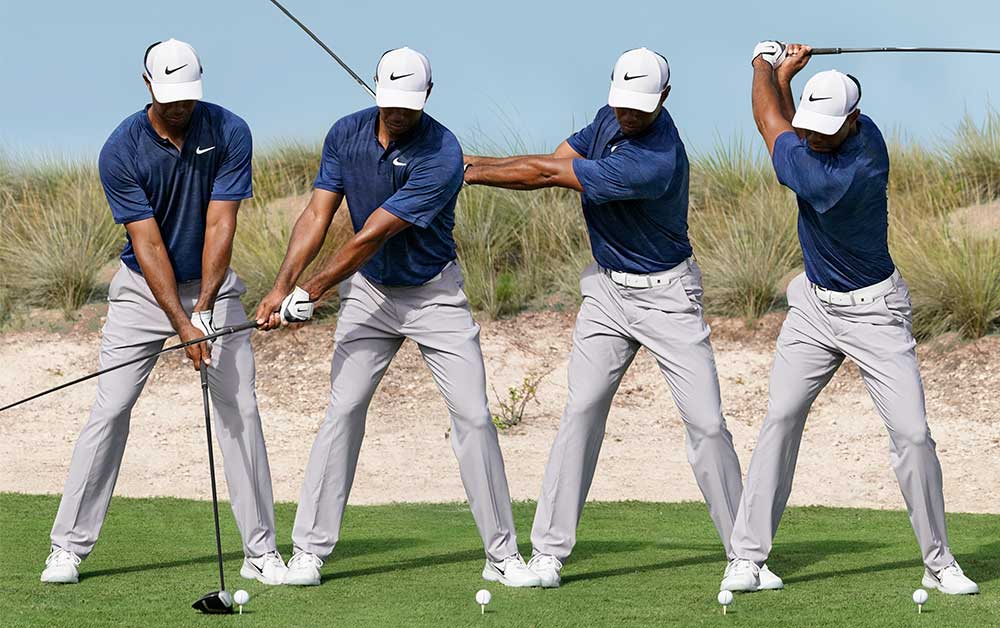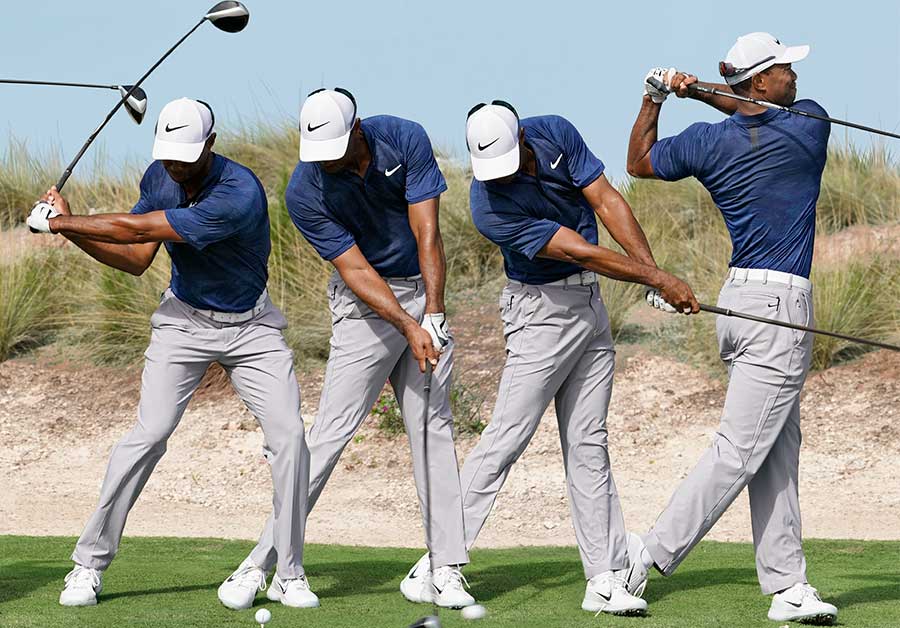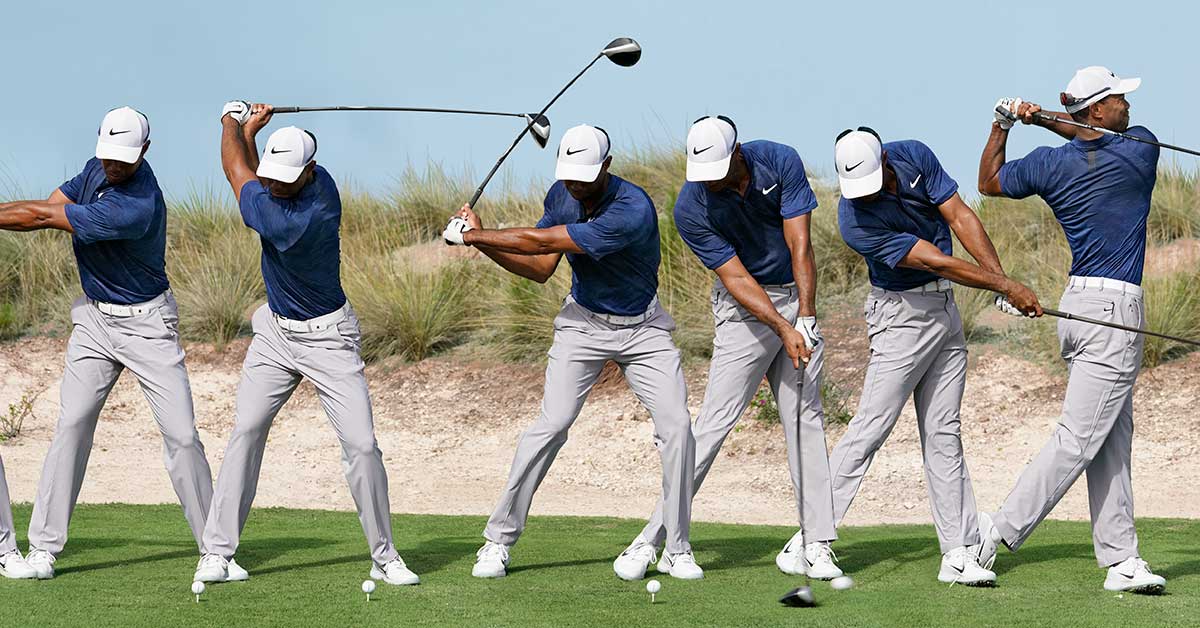With the question of Tiger Woods’ future in golf pivoting from can he win again to can he win another Major, we asked Golf Digest teaching professional David Leadbetter to analyse and comment on the latest version of Woods’ swing.
“Tiger is close to swinging at his very best,” Leadbetter says. “Overall, I like what he’s doing. But my feeling is, if he’s able to sync his swing a little better, it would be the icing on the cake.”
Leadbetter would like to see Woods’ arms and body finishing more in unison at the top of the backswing, so he doesn’t need to rely so much on timing in the downswing.
And considering Woods proved last year that power is not an issue – he was swinging his driver at a healthy 121 miles per hour – why not focus technique on improving control?
“You’re already seeing fewer of those destructive tee shots,” Leadbetter says. “But with better sync, he would be more consistent with the driver. I also think it would be a factor in keeping his back healthy. But what you see here is a great sign for his future.”

Wide Load
“The old theory for power used to be to extend the club back as wide as possible, and then cock your wrists as you get to the top of the swing,” says instructor David Leadbetter. “I feel Tiger’s ultra-wide takeaway here forces him to stop his body turn too soon, affecting his timing.”
Late Wrist Set
You’ll notice very little wrist set halfway back, Leadbetter says. “I’d like to see less stretch off the ball at that point and an earlier wrist set. What that would do is allow him to keep coiling his body while his arms swing back. They would finish the journey at the same time – that’s what I mean by sync.”
Extra At The Top
Woods has no problem getting the club’s shaft parallel with the ground at the top of his swing, but “it’s because the arms run on independently after the body stops coiling”, Leadbetter says. “In still photos, it looks good. But watching his swing in motion, you can see the sync issue.”

Road To Recovery
“If the lower body gets a little too quick and too far ahead in the downswing, then the arms and club will be late (stuck), and there’s too much reliance on the hands and timing to square the face at impact,” Leadbetter says. “That’s why matching up at the top is so important.”
Staying Tall
The positive here is that Woods has far less of a dip in body motion from address to impact, Leadbetter says. “Yet, he’s still getting a lot of power from his lower body. As he changes direction, the knees separate, but there’s not as much squat. His leg action has a Sam Snead look about it.”
No Hanging Back
“In the past, his right shoulder would appear much lower at impact and tilted as he hung back to try to save the shot. And that put more pressure on his lower back,” Leadbetter says. “But here, he doesn’t have that same stuck-and-under look of the past.
His impact position is very good.”
End On A High Note
For a number of years, Woods’ finish had a “manufactured” look, like a gymnast that lands on the mat off balance but then straightens for the judges. Now his finish looks more natural, Leadbetter says. “This also shows you he’s not far off from a technical standpoint.”

Pro-file
Tiger Woods
43 / 185cm / 84kg / Jupiter, Florida
Driver
TaylorMade M3 (9.5 degrees)
Ball
Bridgestone Tour B XS




